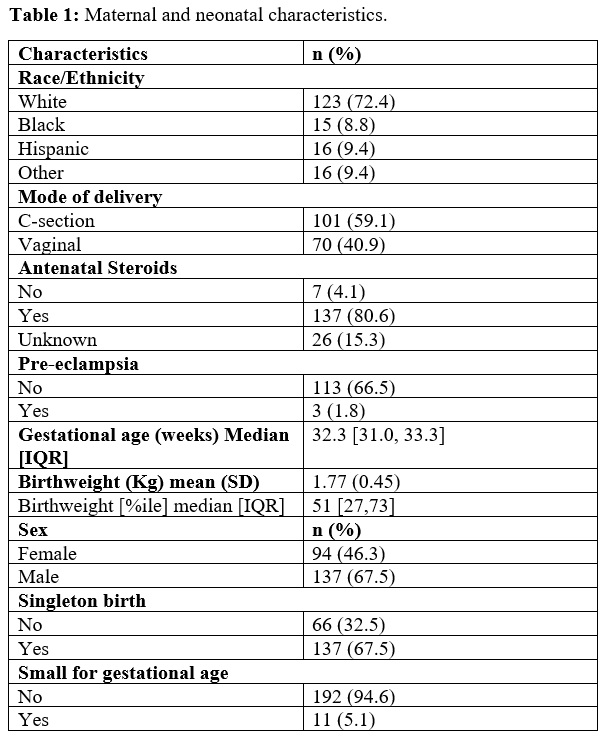Neonatal Respiratory Assessment/Support/Ventilation
Neonatal Respiratory Assessment/Support/Ventilation 4: Surfactant and NIV 1
667 - Oxygen Saturation Index as a predictor for surfactant administration
Publication Number: 667.442
- HZ
Henry Zapata Galarza, MD
Fellow
University of Wisconsin School of Medicine and Public Health
Madison, Wisconsin, United States
Presenting Author(s)
Background: Surfactant replacement therapy improves survival and respiratory outcomes of preterm infants with respiratory distress syndrome (RDS). Current surfactant administration practice is based on fraction of oxygen (FiO2) needed to maintain certain goal oxygen saturation (SpO2). This approach leads to delay in timely administration of surfactant. Also, use of FiO2 alone can be misleading, therefore in this study, we evaluate the utility of oxygen saturation index (OSI) during the first two hours of life (HOL) as criteria for surfactant administration in preterm infants.
Objective: To determine the utility of OSI during the first 2 HOL as a predictor for need for surfactant administration in moderate preterm infants during the first 72 HOL.
Design/Methods: A retrospective single-center cohort study of 203 neonates was performed. We included neonates between 28 0/7 to 33 6/7 with clinical diagnosis of RDS that were not intubated before 2 HOL. Summary of hourly FiO2, mean airway pressure (MAP), and OSI (FiO2 x MAP/SpO2) were recorded. Log-binomial regression was used to determine whether average OSI during first 2 HOL was associated with risk of needing exogenous surfactant administration.
Results:
Median gestational age (GA) and birthweight were 32.3 weeks and 1.77 Kg respectively (Table 1). Majority of neonates (68%) were on CPAP. Twenty-seven neonates (13.3%) required exogenous surfactant within the first 72 hours. Average OSI was zero for 48 neonates indicating being on room air which were removed from rest of the analysis. Median OSI was 1.51 (IQR 0.23, 3.41). Need for exogenous surfactant administration within 72 hours was associated with average OSI (p < 0.001). Each 0.5-unit increase in average OSI is associated with a 2.06-fold increase in risk of needing surfactant (95%CI: 1.58-2.68, p< 0.001). Average OSI for the first 2 hours was divided into five non-overlapping intervals with a length of 0.25 units. Risk ratios associated with receiving surfactant within 72 hours are found to increase with increasing level of the group (Table 2).
Conclusion(s): Our study demonstrates OSI as a predictor for surfactant administration within first 72 hours. We propose OSI as a non-invasive biomarker of oxygenation status, readily available at bedside, to predict neonates at higher risk of intubation and subsequent need for surfactant administration in early course of RDS. Optimal OSI cutoffs for surfactant administration need to be determined in large cohort studies. 

